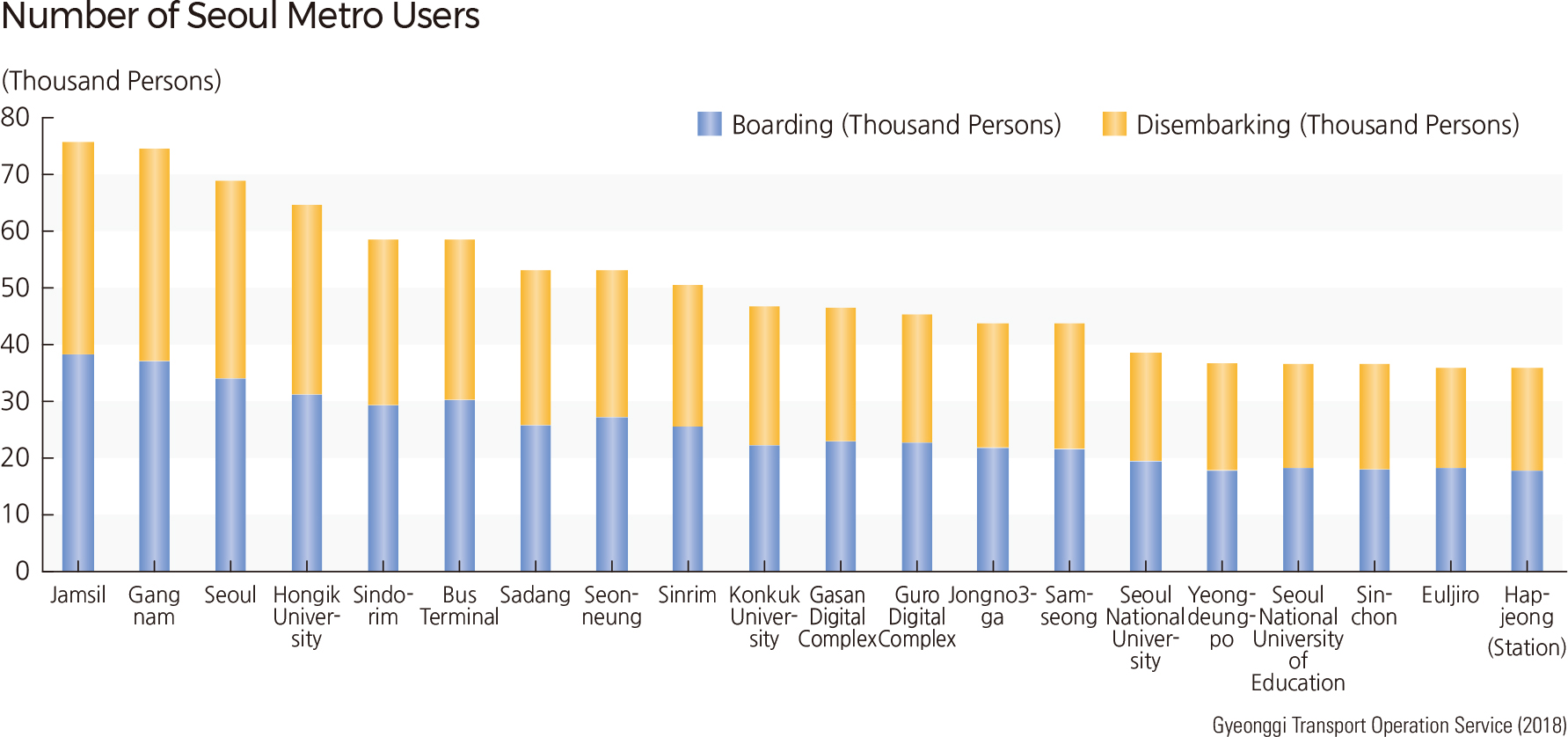English I 2019
Living population (de facto population) in Seoul suggests the estimated population at a specific time and place by combining the public big data from the Seoul metropolitan government and telecommunication data from Korea Telecom. Big data like the public transportation census, population census, economic census, and building database are used to estimate the living population. There is a difference between the real and estimated population at a specific time and place due to people who do not have a cellular phone, and it can be moderated by calibrating the population census. However, living population in Seoul can suggest a difference between the time and place which cannot be detected from the population by census data. The choropleth map below shows the resident population, weekday nighttime, weekday daytime, weekday evening time, and weekend daytime by administrative dong (neighborhood). Distribution of population from census data shows the emptying out of the central business districts in Seoul. However, comparing the distribution of the population along time, residential and business districts can be easily detected. Spatio-temporal population distribution can be captured by visualizing the population in Seoul. |

